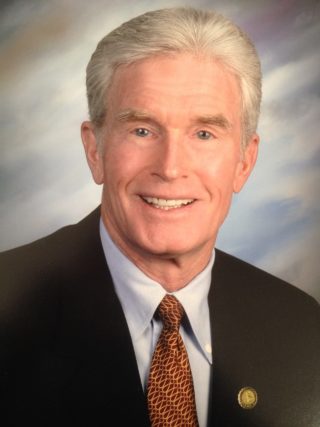HOME | ABOUT US | MEDIA KIT | CONTACT US | INQUIRE
HOME | ABOUT US | MEDIA KIT | CONTACT US | INQUIRE
After initial fears in Mideast, investors see turbulence ebbing. Will it last?
PUBLISHED JULY 2025
 Last month’s military strikes by the U.S. against Iran’s nuclear facilities in Fordow, Natanz and Isfahan marked a significant escalation in the ongoing conflict between Iran and Israel. President Donald Trump, in brief remarks to the nation, said Iran’s nuclear enrichment facilities had been “completely and totally obliterated.”
Last month’s military strikes by the U.S. against Iran’s nuclear facilities in Fordow, Natanz and Isfahan marked a significant escalation in the ongoing conflict between Iran and Israel. President Donald Trump, in brief remarks to the nation, said Iran’s nuclear enrichment facilities had been “completely and totally obliterated.”
The U.S. strikes come after Trump said he would decide with-in two weeks whether to attack Iran. The operation was met with bipartisan praise in Congress, with Speaker Mike Johnson saying the president “made the right call.” Israel’s Prime Minister Benjamin Netanyahu said Trump and the U.S. had “acted with a lot of strength.” Iran’s foreign ministry, in a statement, said the U.S. operation was a “grave and unprecedented violation” of international law and that Iran was “resolved to defend” its territory, sovereignty, and security.
After taking credit for brokering a ceasefire between Asian nuclear-armed neighbors India and Pakistan back in May, U.S. President Donald Trump is at it again.
Just two days after the U.S. action, Trump announced that Israel and Iran had agreed to a “complete and total” ceasefire; Trump said the ceasefire was now in effect.
Israel’s Prime Minister Benjamin Netanyahu said Trump’s proposal was agreed to in light of Israel having achieved all its objectives in Iran. Almost immediately, however, Israel accused Iran of violating the ceasefire and promised to respond with force. For its part, Iran’s foreign minister, Seyed Abbas Araghchi, said there was no agreement yet on any ceasefire.
Markets are happy despite the uneasy nature of the cease-fire and the accusations of violating it. Sentiment was quickly boosted across global markets. Oil extended its decline as concerns over a supply shock dissipated.
Then Fed Chair Jerome Powell told the House Financial Services Committee the Fed was on hold with interest-rate policy until it could be certain that Trump’s tariffs would not result in a significant jump in inflation. He refused to speculate about when the Fed might move.
Powell generally stuck to the tone set earlier at a news conference: Cuts are more likely than not at some point this year, tariff impacts are on their way but should be temporary, and policy is in a good place. The dovish read is that, by saying tariff-induced price impacts should show up over the summer in June and July data, Powell put a September cut on the table.
Although there’s broadly low conviction within the FOMC for how the outlook will evolve, recent Fedspeak has suggested more enthusiasm from the group inclined to ease than the group that prefers to wait until something breaks.
Capitalism Under Attack
“I don’t think we should have billionaires,” said Zohran Mamdani, who just clinched the Democratic nomination for mayor of New York City. “Frankly, it is so much money in a moment of such inequality. There has to be a better distribution of wealth.” Why should intelligent people listen to him?
The Big Apple not only houses the New York Stock Exchange and NASDAQ but is also the financial capital of the world, where the top 1 percent of earners pay nearly half of all its taxes, according to the city’s Independent Budget Office.
Turning to the stock market, the wealthiest Americans also control a majority of shares. In fact, the top 1 percent own half of all corporate equities and mutual funds in the U.S., per data from the St. Louis Federal Reserve.
Much of the wealth, employment and services generated in society today have been facilitated by billionaires. Shop on Jeff Bezos-founded Amazon? Promote your business on Mark Zuckerberg-owned Instagram? Wear a pair of Phil Knight-founded Nike shoes? The list goes on.
While there are legitimate concerns over the effects of concentrated economic power, a better measurement might be how accessible it is to climb the income ladder, or to start a competitive business. The same holds true with regard to public equity markets, and whether it has become easier or harder to trade and invest in recent decades.
Stocks have seen a spectacular rise since the bottom in early April. President Trump said on Truth Social, on April 9th, the day the recovery began, “THIS IS A GREAT TIME TO BUY!!!”
On April 8th, the S&P 500 touched a low of 4,910. As of last Thursday’s close, it was at 6,279, up 27.9% in three months. NASDAQ fell as low as 14,784 in April, and it closed last week at 20,601, up 39.3% in three months. Maybe President Trump should register as an investment advisor and start a new market timing service …